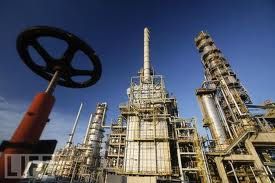
Energy analysts raised their 2011 natural gas price estimates for the first time in 10 quarters after early summer heat helped boost demand, according to a Reuters poll.
The 27 forecasters surveyed raised their forecasts for the average 2011 natural gas price 1.9 percent from last quarter’s estimates.
But a huge overhang in gas supply, primarily from record production from unconventional shale plays, continued to temper price expectations.
“The market is out of balance. It’s definitely oversupplied, and the concern we have is that the oversupply will become more pronounced as the year goes along,” said Roger
Read, managing director at Morgan Keegan in Houston.
The quarterly poll put the consensus forecast for the average spot price this year at Henry Hub, the benchmark US supply point in Louisiana, at $4.35 per mmBtu. While up from last quarter’s estimate, it was 1.4 percent below the $4.41 average in 2010.
Henry Hub prices averaged $4.25 for the first six months of this year, down 10 percent from the $4.73 average during the same period in 2010.
The Hub peaked this year in June at $4.983, a 10-month high, as early heat and nuclear outages lifted demand for gas.
Reuters polling for 2011 prices began in January 2009 at $7.60, but steady growth in shale output and a sluggish economy had forced many analysts to scale back expectations even with two cold winters and two warm summers that helped burn up more gas than expected.
Sixteen participants in the poll revised their forecasts upward, while four were unchanged and six revised downward. One did not participate in the previous poll.
While analysts see prices 11 percent higher at $4.83 in 2012, current estimates were down slightly from the previous poll. Most expect production growth to slow in 2012, but projected increases in demand are not likely to be enough to significantly tighten the supply-demand balance.
Prices in 2013 were seen gaining 12 percent to $5.40 as producers shift away from gas to higher margin prospects in oil or gas liquids, while an improved economy lifts industrial and electric power demand.
Despite strong weather demand so far this year, record high gas production remains the biggest problem for would-be bulls.
A stubbornly-high gas drilling rig count, primarily from shale, has kept the market oversupplied, and recent rig data offers little chance that production will slow anytime soon.
“The rigs have held in there and are more productive which has led to much stronger growth in production than expected. This raises questions about (weaker) pricing in the next few months,” said Earl Sweet at BMO Capital Markets in Toronto.
The Baker Hughes gas-directed rig count last week hit an 11-week high of 889 and stands well above the 800 level some analysts say is needed to cut output and tighten supplies.
The US Energy Information Administration expects marketed natural gas production this year to climb 3.6 billion cubic feet per day, or 5.8 percent, to a record 65.39 bcfd, easily eclipsing the previous high, hit in 1973, of 62.05 bcf daily.
Most analysts don’t expect any significant slowdown in domestic gas output until very late this year or next year.
Record water levels in the West have also helped loosen supply as utilities in the region reduce their use of gas to generate electricity and turn to cheaper hydropower instead.
Most analysts agreed several demand surprises this year have kept inventories much lower than initially expected.
“Even though we’ve had this talk of a supply glut, we’re seeing rising demand on the industrial side and extremely high weather demand which has had an impact on injections,” said Jason Schenker, president of Prestige Economics in Austin.
Utilities typically build inventories from April through October to help meet 25 percent of peak winter heating needs.
Storage began last winter at an all-time high of 3.84 trillion cubic feet and most analysts expected stocks to end the heating season at a record 1.8 tcf.
But frigid weather spiked demand for space heating and burned up some 2.25 tcf of inventory gas, or nearly 300 bcf more than normal, leaving stockpiles of about 1.6 tcf near average at the start of the injection season.
An unusually large number of nuclear plants shut for spring maintenance, shifting demand to gas-fired units, which often make up any shortfall in nuclear or coal generation.
At the peak, 32,800 megawatts of nuclear generation were out of service, more than 10,000 MW above normal which could have lifted projected daily gas demand 3.5 percent at a time when mild weather typically slows gas use.
Early heat in May and June and a July heatwave forced utilities to burn more gas to keep up with cooling demand.
EIA data this week showed total gas inventories stood at 2.714 tcf, about 7 percent below last year and 2 percent below the five-year average.
The huge inventory deficit versus last year has supported prices this summer, but the gap has narrowed over the last six weeks. Many traders expect it to shrink further as temperatures moderate from recent record highs.
In addition, relatively low gas prices have prompted power utilities to switch over from costlier coal, adding 2 bcf per day to demand. Lower gas costs have lifted industrial gas use from petrochemical and fertilizer manufacturers.
But EIA sees total US gas consumption up only about 2 percent this year, well below projected gains in supply.
Even with imports from Canada slowing and exports to Mexico growing, analysts agree it will not be enough to balance the gas market anytime soon without serious production cuts.
Many analysts think the only way to balance the gas market will be if prices sink low enough, perhaps below $4, to displace even more coal-fired generation. Switching from coal added as much as 3 bcf per day to gas demand in 2009.
Source: Reuters
We use cookies to improve your experience. By continuing to use our site, you accept our Cookies, Privacy Policy,Terms and Conditions. Close X